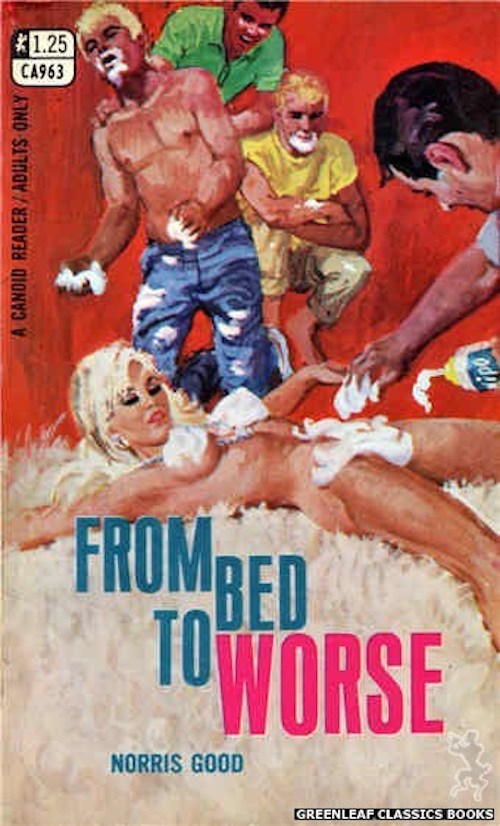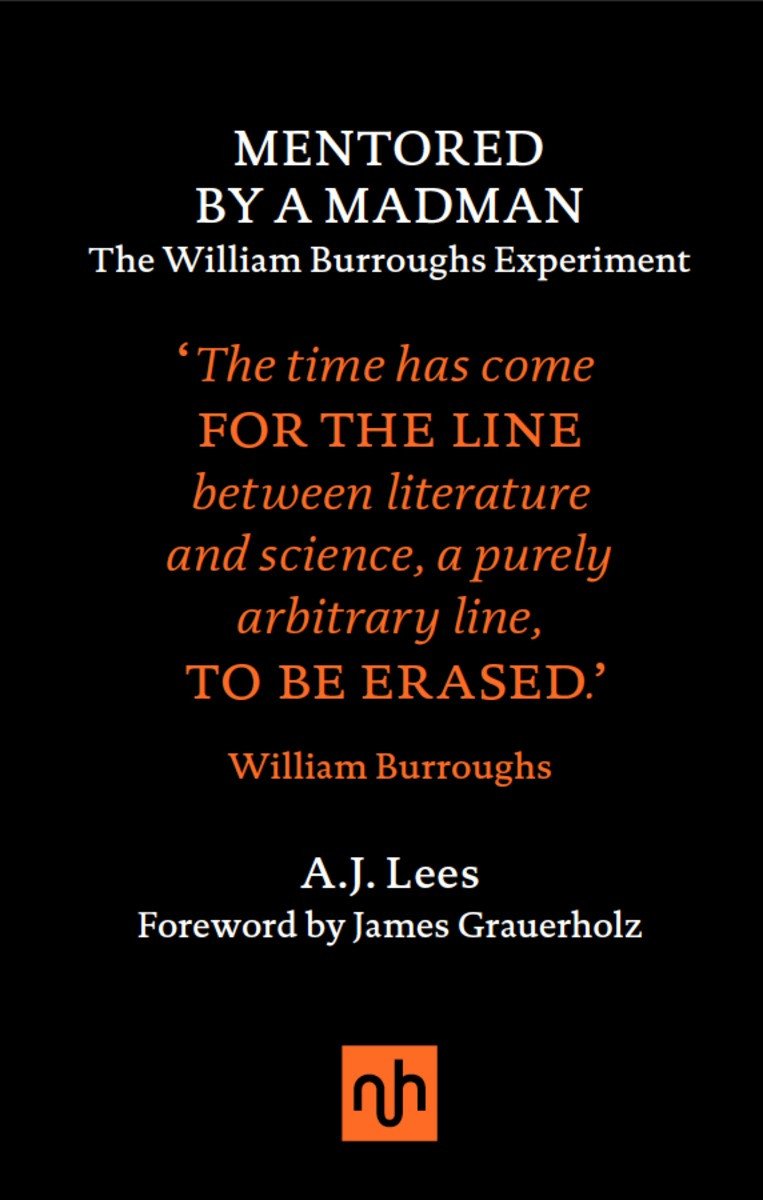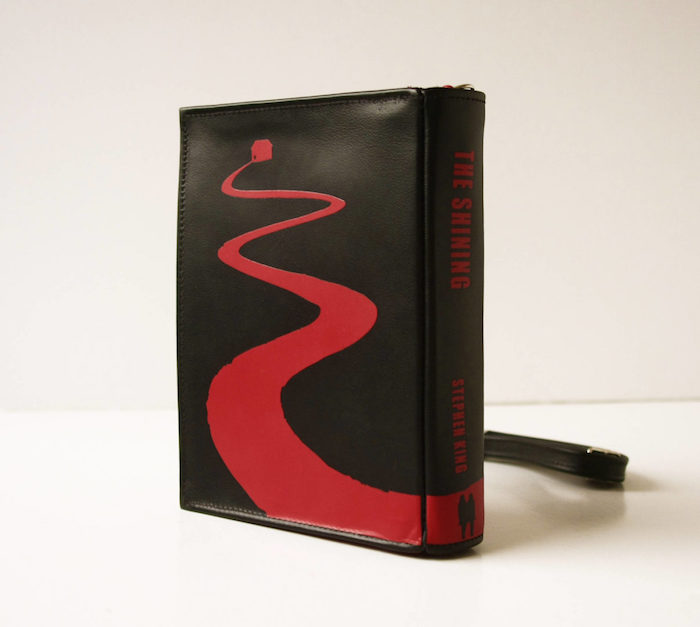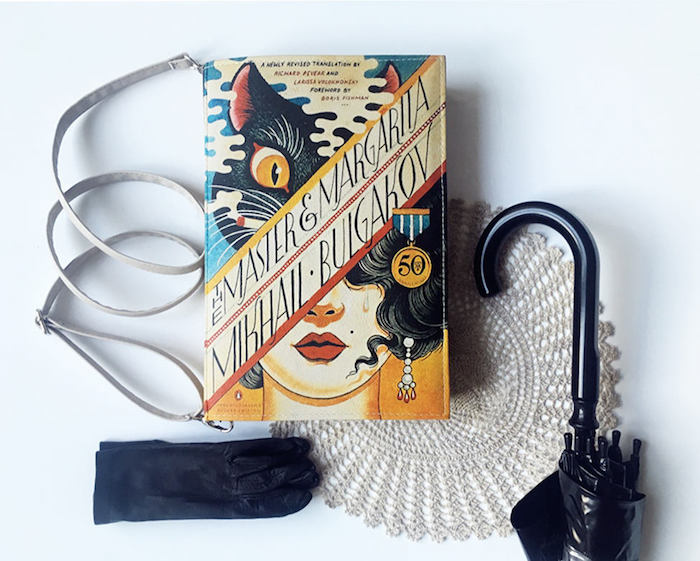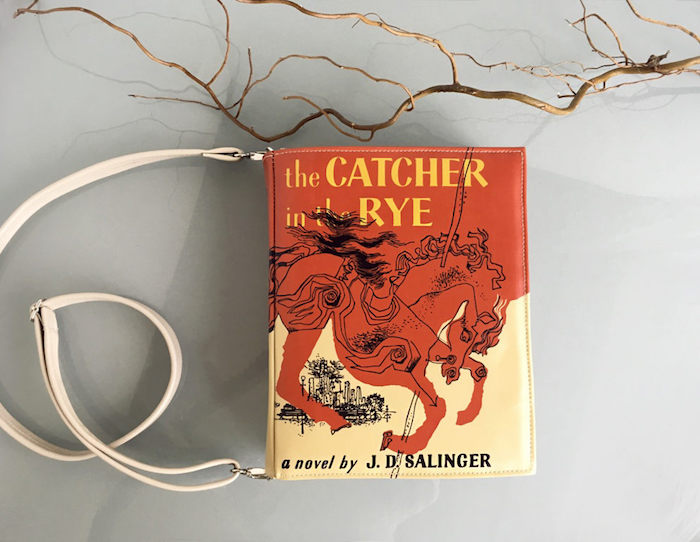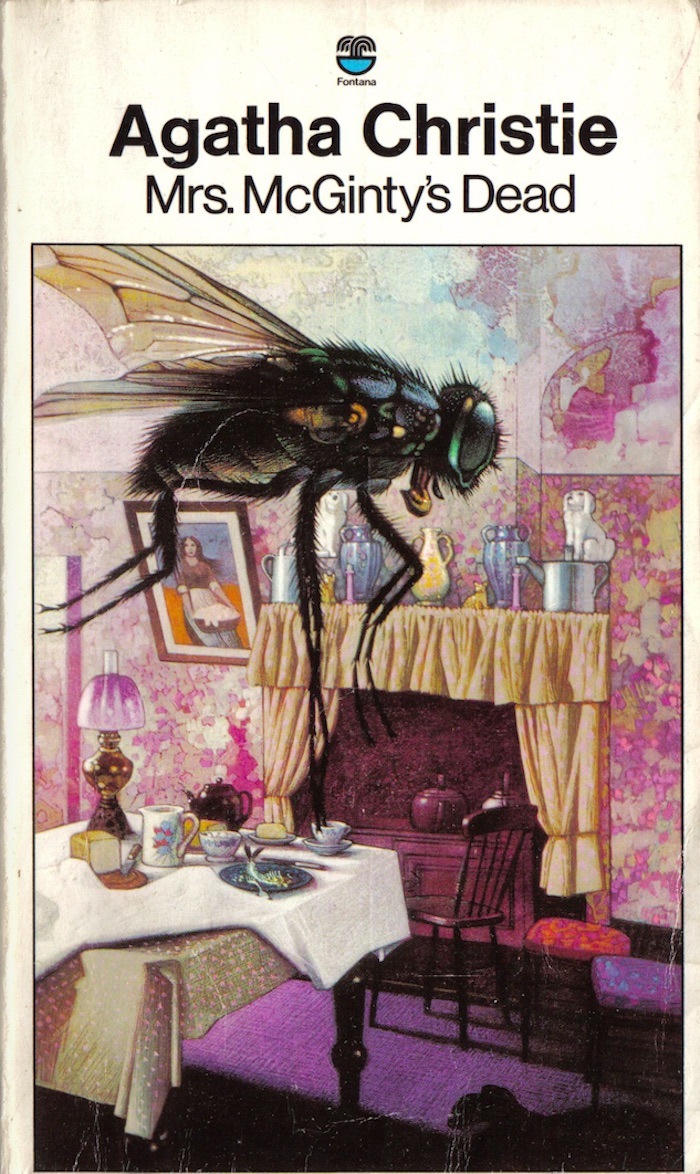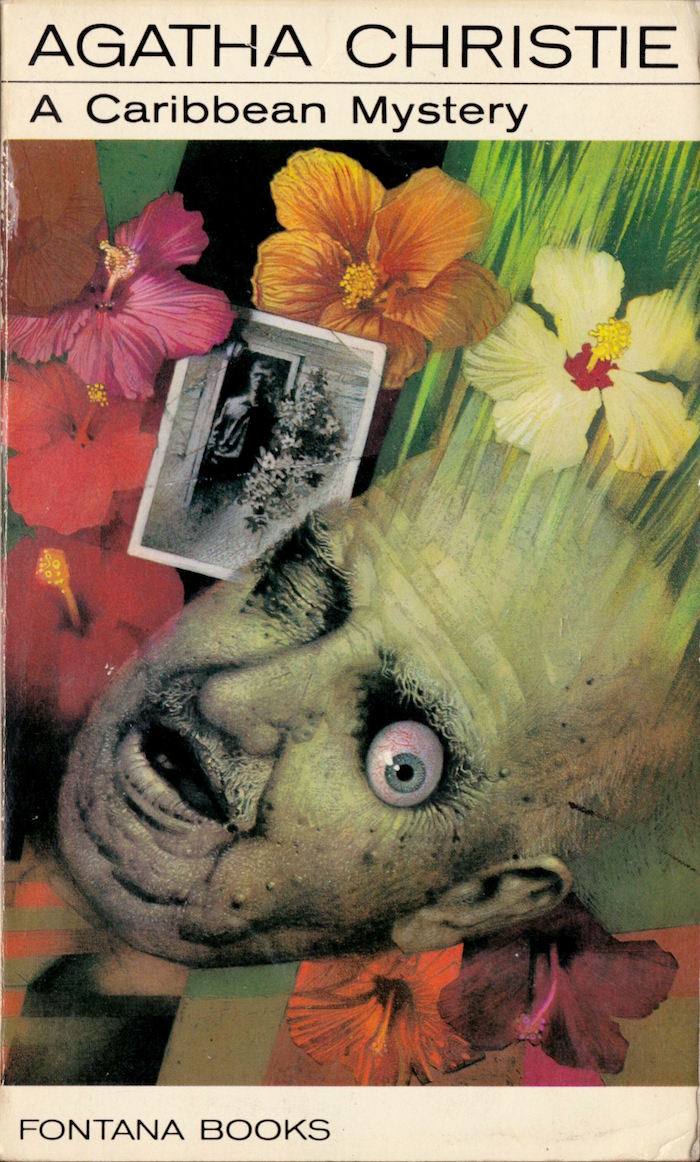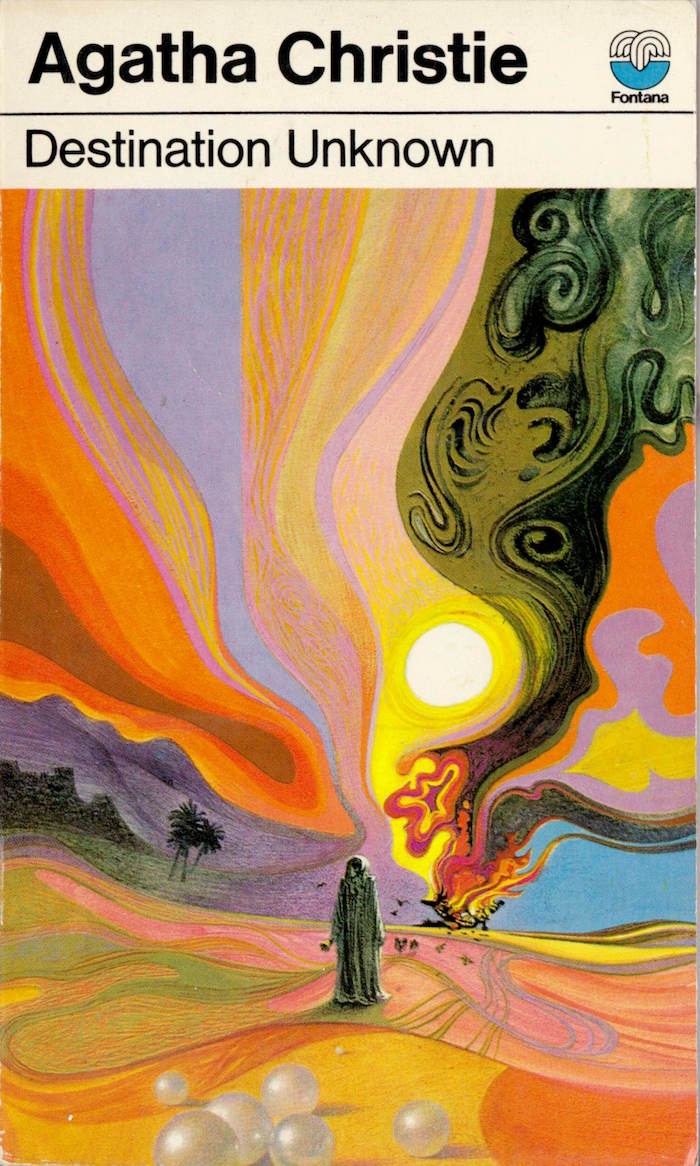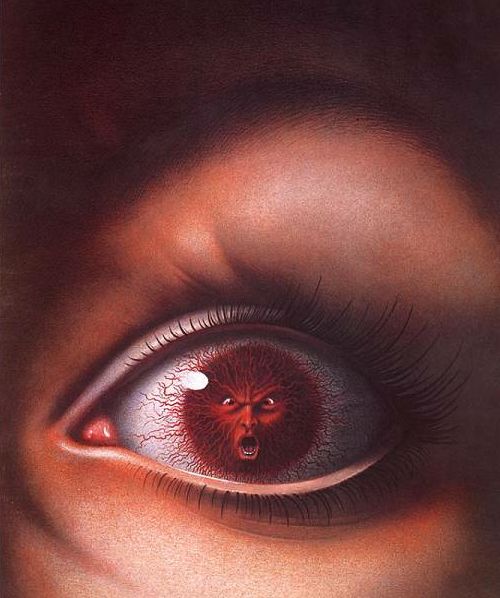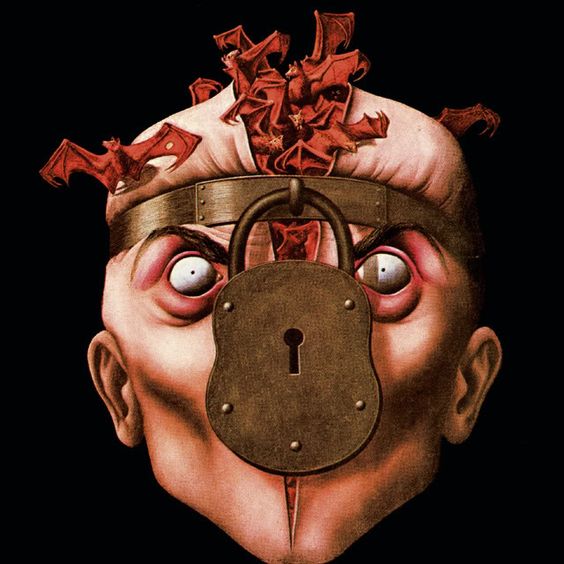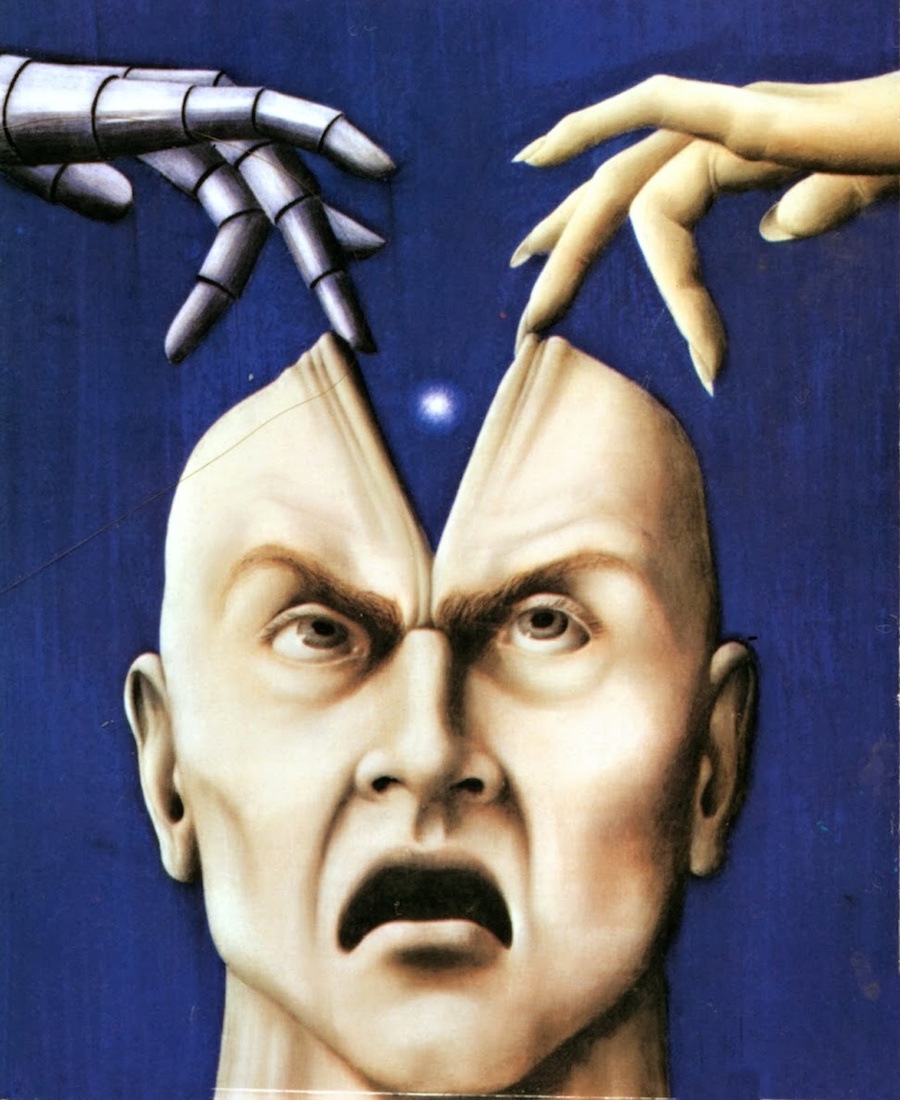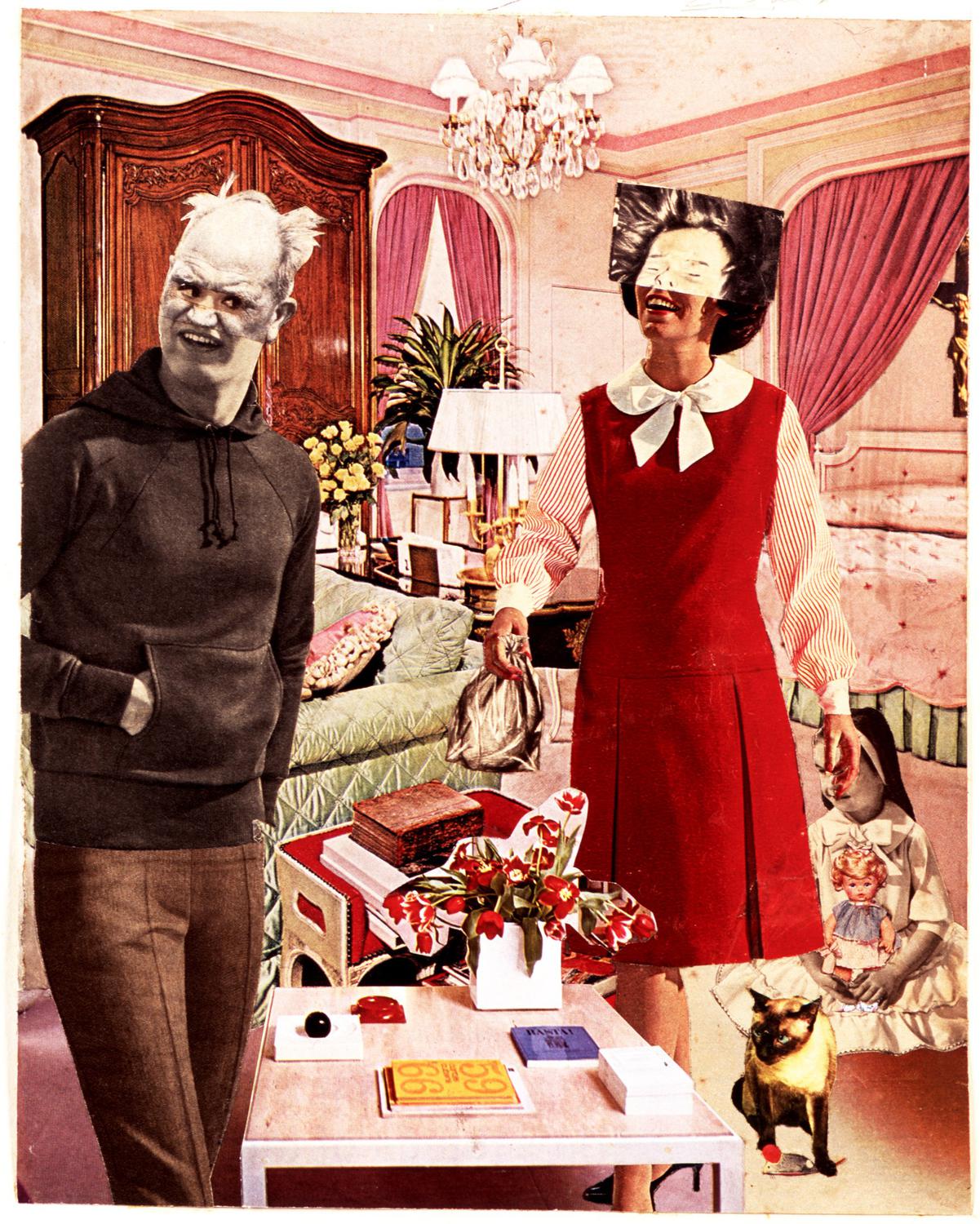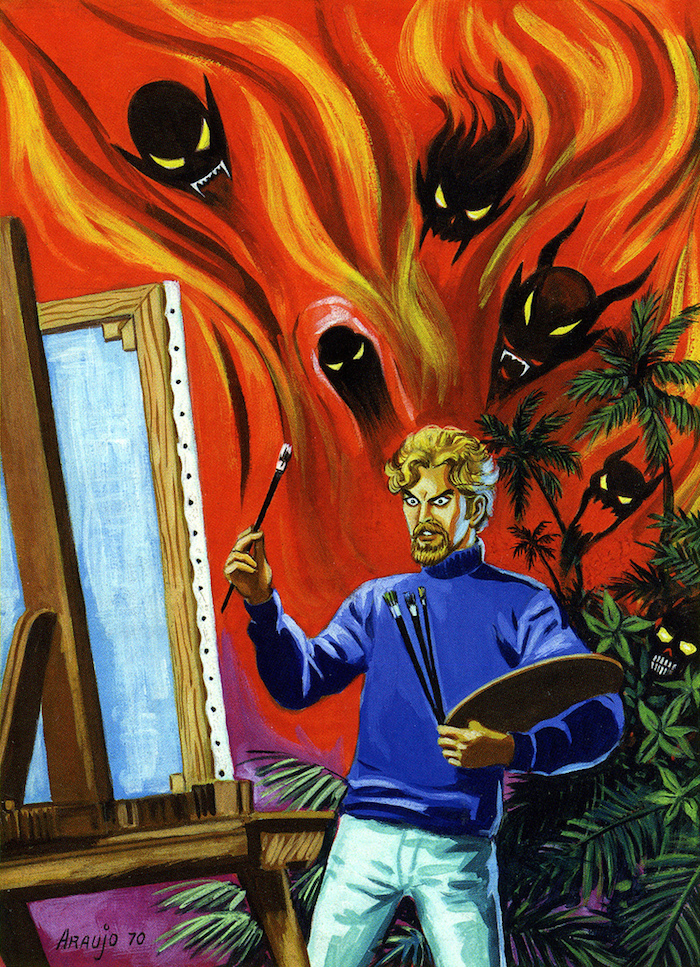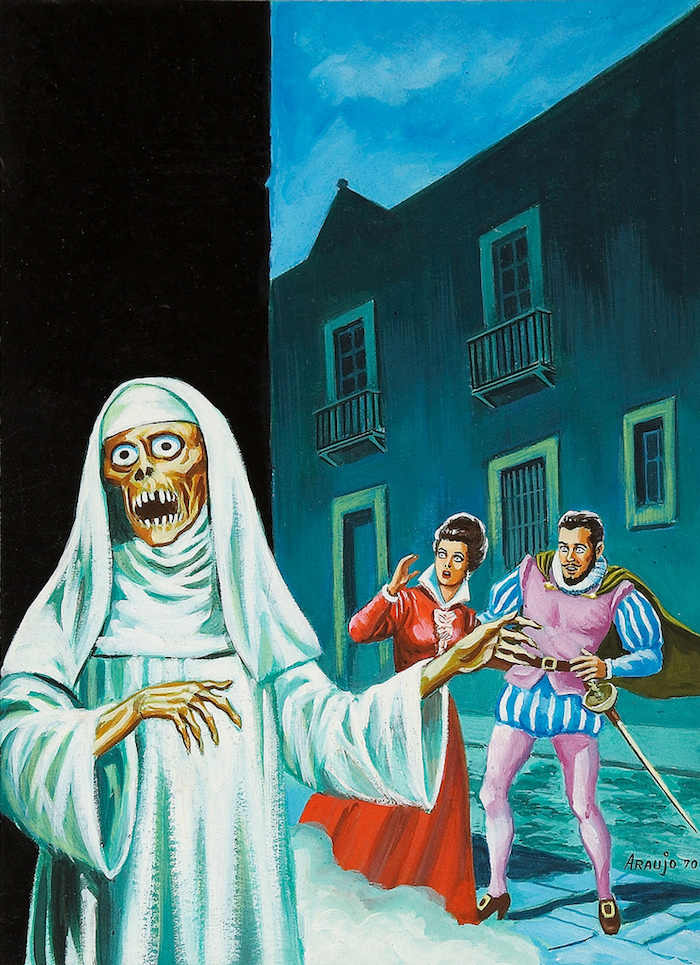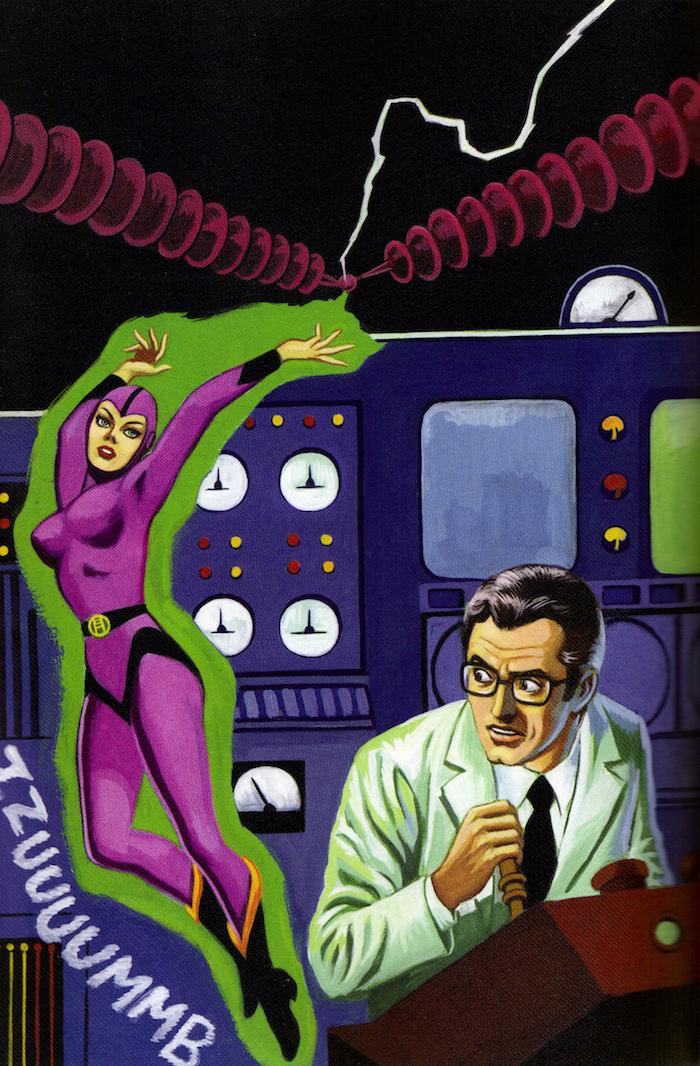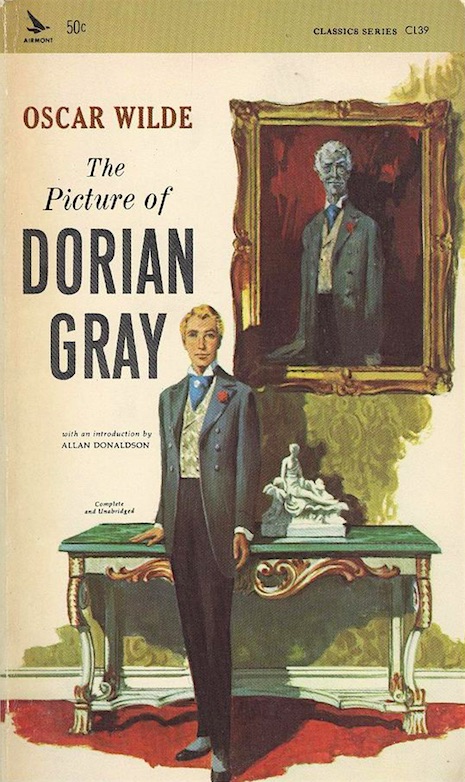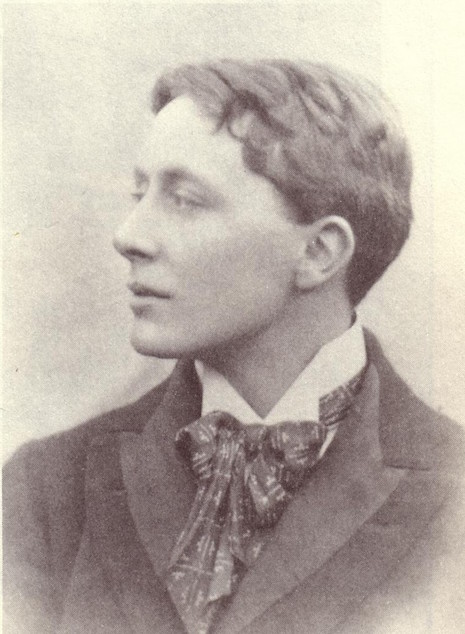
By way of an introduction to this selection of lobby cards from the spy thriller A Dandy in Aspic, let me tell you something about the film’s author, Derek Marlowe who wrote a series of bestselling novels in various genres during the sixties and seventies.
You could say Marlowe is one of my favorite writers. I was drawn to his work in my early teens because of the artfulness of his writing, the beauty of his style. I’d had a fill of the MacLean’s and Innes’s and all the other boyhood adventure yarns and was edging towards something heavier—Kafka and Camus and Sartre, Hemingway, and Chandler—when I first picked up a copy of Echoes of Celandine, or The Disappearance as it was later reissued to tie-in with the Donald Sutherland film. This was a story of a hitman, a rather disillusioned hitman, who has one final job to complete which results in some rather tragic events. Unlike the hard-nosed prose of other thriller writers, Marlowe told his tales with a spellbinding lyricism which knocked me for six.
Maybe it was the confluence of age, location, and teenage years, where passions can turn both absurd and romantic, or perhaps a kind of generational thing, as the similarly-aged eminent author Nicholas Royle (who you should also read) tuned in around the same time and still considers Marlowe his “favorite author.”
Marlowe’s style made me aware of the joy and tremendous power to be found in good writing and how a story could be told in oblique and very unexpected ways. A big influence on Marlowe’s writing was, perhaps unsurprisingly, F. Scott Fitzgerald. I suppose it could be argued there are elements of The Great Gatsby filtered throughout Marlowe’s work—even the title of his last novel The Rich Boy from Chicago is a trifle Fitzgeraldean. Marlowe kept a copy of Fitzgerald’s Afternoon of the Author with him throughout his life. His copy had been given to him as a Christmas present in 1960, which he annotated with notes until his death in 1996. To reuse a quote from Arthur Mizener’s introduction to this book, Marlowe, like Fitzgerald, wrote books where the sense of the past is sharp with a “memory for the precise feelings of a time and for the objects to which these feelings cling.” This is seen in nearly all his books but most notably A Single Summer with L.B., Echoes of Celandine, Do You Remember England?, The Rich Boy from Chicago, and his very first novel A Dandy in Aspic.
Born in 1938 into a London east end working-class family, Marlowe first came to note after being sent down from university for writing a satirical piece on exams and lecturers. By a circuitous route, this led Marlowe to write plays for the Royal Court Theater and the Royal Shakespeare Company in the early 1960s, which as he once told me was always quite “off-the-cuff”:
“Someone comes along in a bookshop and says, ‘Would you adapt The Lower Depths for the Royal Shakespeare Company?’ which to me seems extraordinary.”
Though highly proficient at it, Marlowe found writing plays all a bit too easy. Through his work, he became friends with a variety of artists and writers, like actor Corin Redgrave, artist Pauline Boty (who painted his portrait) and most notably the writers Tom Stoppard and Piers Paul Read with whom he attended a writer and filmmaker’s course in Berlin sponsored by the Ford Foundation. [Peter Bergman of the Firesign Theatre was also a part of this course.] On return to London circa 1965, Marlowe, Stoppard, and Read roomed together. While Stoppard focussed solely on writing plays, Marlowe decided to try his hand at writing a novel something which he had started while in Berlin. This was A Dandy in Aspic which Marlowe had originally intended as a play, but he “wrote it as a novel and found [he] suddenly enjoyed it.”
“I wrote it on trains, on the loo, everywhere. I loved actually writing prose, I thought it was smashing. When the book was actually bought, and published by Victor Gollancz and then became a bestseller in America, then made a movie out of it, I thought, ‘My God, writing is easy, isn’t it?’ I learned, of course, that I had the luckiest four-years in my life.”
When Stoppard first heard about Marlowe’s plans to write a spy thriller, he thought him mad, as Ian Fleming, Len Deighton, and John le Carre had more than cornered that market. But when Marlowe told Stoppard what his story was about, the playwright quickly changed his mind. A Dandy in Aspic tells the story of a spy, Eberlin, assigned to find and kill a Russian assassin called Krasnevin. Unfortunately for Eberlin, he is a double-agent working for the Russians and is himself this murderous assassin Krasnevin.
Marlowe once told me how he recalled watching television with Stoppard and Read while idly discussing where their careers might take them.
“I remember once, we were watching Top of the Pops, and Mick Jagger was singing ‘Satisfaction’ and we talked about who was going to get the first million dollars—or whatever. And we all thought Tom would be it—the first person, not a question of top dog, but make big money. [As it turned out] It was myself with Dandy merely by a whisker, because Tom got it with Rosencrantz and Guildenstern, and Piers with Alive.”
Marlowe’s novel was an immediate and enormous success on both sides of the Atlantic. The film rights were sold and a movie made starring Laurence Harvey, Mia Farrow, Tom Courtney, and Peter Cook, with a soundtrack by Quincy Jones. Marlowe was then “whipped around America” by his publisher Puttnam. He felt wonderful and was “arrogant, cocky, absolutely appalling.”
“Don’t forget this was ’65-’66, this was the time of The Beatles, of Julie Christie, of Swinging London, of Time magazine going crazy over this small city we’re in now. And because, I was then, what 25? 26? I had a Beatle haircut, and of course, I was the most obnoxious person ever, but adorable.”
A Dandy in Aspic was directed by Anthony Mann, who is best-known for his westerns like The Furies, Winchester ‘73, Bend in the River, and The Naked Spur, his film noir movies like Strangers in the Night, Two O’Clock Courage, and Strange Impersonation, alongside his mainstream hits like The Glenn Miller Story. Mann died of a heart attack during filming and was replaced by Harvey as director, which as Marlowe said, was a bit like the Mona Lisa touching up her portrait when Leonardo was out of the room. Though it was scripted by Marlowe, the film excised much of what was good about the novel and veered between a gritty realism (probably Mann’s direction) and a rather camp pop art sensibility (probably Harvey’s) take for example, Tom Courtney’s performance as Gatiss with his oddly phallic machine gun umbrella—WTF?.
Released in 1968, A Dandy in Aspic did reasonably well and has since become something of a kind of cult flick for its compelling story and strange filmic style. Marlowe went on to write a total of nine novels, which are currently being republished by Silvertail Books, and a load of movie and television scripts. He died from a brain hemorrhage while working in Los Angeles on November 14, 1996.

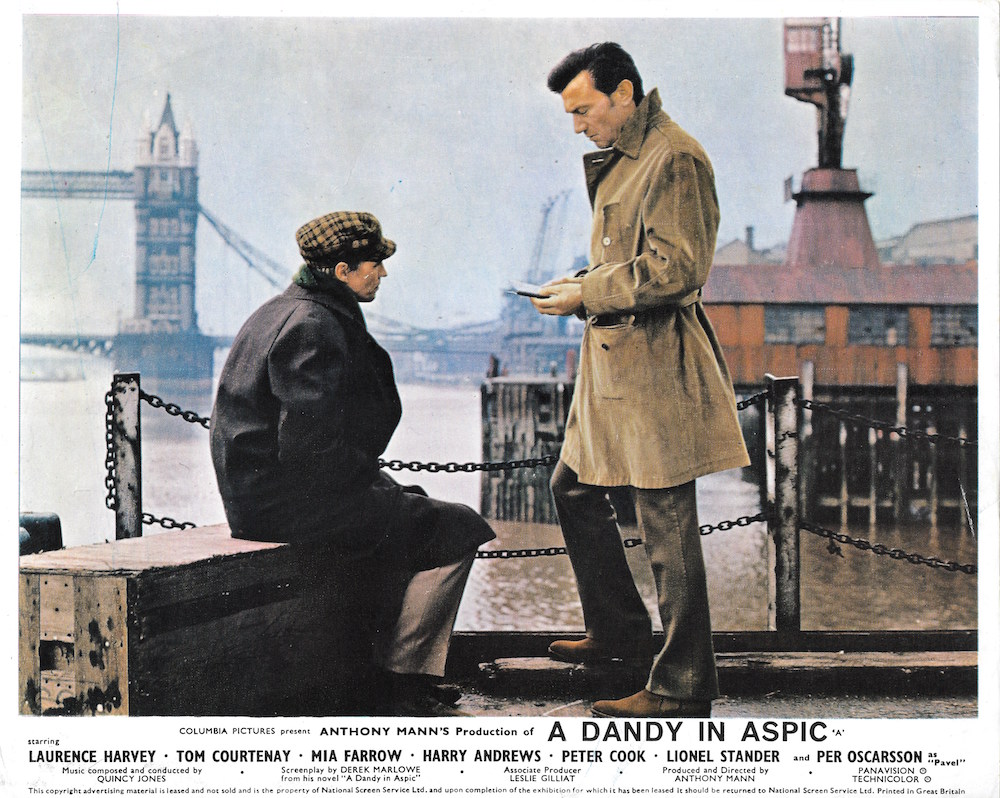

More dandies for ‘A Dandy in Aspic,’ after the jump…
